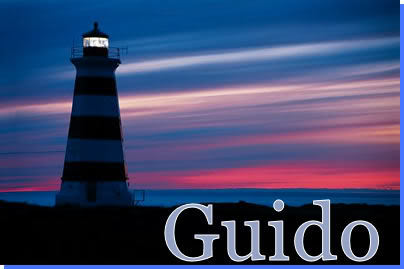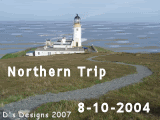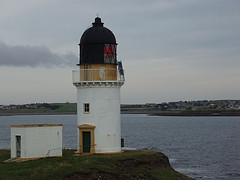Kinloch Castle is what's known as a
folly. It was built in 1897 by George Bullough, an industrialist from
Accrington, Lancashire (England). He had money to burn, and no expenses
were spared in the construction of this red sandstone pile. It's not
just the grand scale of the castle, it's the interior that take your
breath away. It was designed to so in George Bullough's day, and still
does. The bathroom had 14 different showers and douches, the bedrooms
were laid out in the best finery money could buy. The ballroom has a
grandpiano from 1902, which I played myself in October 2004. The piano
stands on a tiger skin. It is surrounded by a gruesome sculpture of a
monkey eagle, Japanese vases standing 8 feet tall. An orchestrion,
which can play a number of musical instruments mechanically, is
installed. It's one of 6 remaining in the world, and the only one
that'll still play. Until World War 1, there was a heated conservatory
which housed an alligator, seaturtles and tropical birds. A
hydroelectric plant (still in use) provided the power required. After
the Great War, the conservatories fell into decay. The alligator was
shot, the turtles released into the sea and the wee birds died of cold.
The last descendant of the Bulloughs, Lady Monica, died in 1957, aged
97. She followed her husband the 8 miles to the family mausoleum at
Harris, on the southwestern face of Rum. Over the shoulder of Fionchra,
past Salisbury's disastrous dam. It's a rough track, which takes 3
hours to walk and 3 hours to drive. Efforts to improve the road fail,
precisely because of its calamitous state. These days, the castle is
plagued by damp and rot. The former servants quarters are in use as a
hostel or hotel. As I indicated, I visited Rum in October 2004 (see the relevant entry in the Northern Trip - The Start journal). I'm sad when I think of Rum. None of its indigenous residents remain, they were all forcibly removed in 1826, and Rum has since been the domain of red deer. After 1957, SNH (Scottish Natural Heritage) took over, and Kilmory Glen (on the northern side of the island) became the focus for behavioural studies of the deer. Thirty people, all SNHor castle employees, live on the island. Plans are afoot to boost this number to 80, unrelated to SNH.
Friday, 2 June 2006
Subscribe to:
Post Comments (Atom)












Extremely interesting ..........Jan xx
ReplyDeleteYes it's sad when everyone has gone under pressure. At least the deer are still there. The castle sounds very interesting! Jeannette xx
ReplyDeleteWhy were they removed in 1826?
ReplyDeleteLori